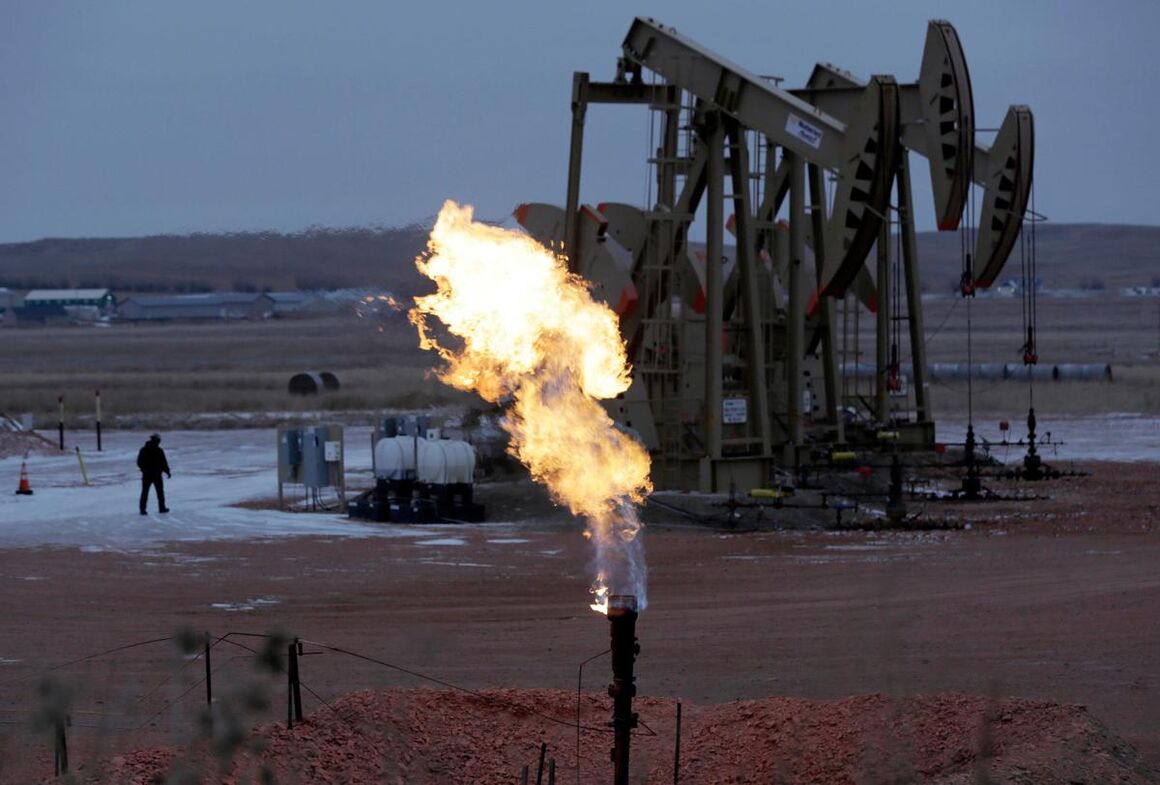In addition, traders noted prices gained due to uncertainty in global markets.
The price increase came even though the market expects more interest rate hikes from U.S. and European central banks. Higher interest rates increase borrowing costs and can slow economic growth and reduce oil demand, Reuters reported.
Brent futures rose $1.82, or 2.2%, to $82.89 a barrel by 11:56 a.m. EDT (1556 GMT), while U.S. West Texas Intermediate (WTI) crude rose $1.96, or 2.5%, to $79.03.
That put both benchmarks on track for their highest closes since April 19 and pushed both contracts into technically overbought territory.
In addition, WTI futures were on track to close over the 200-day moving average, which has been a key point of technical resistance since August 2022.
Bob Yawger, director of energy futures at Mizuho, a bank, said a close above the 200-day moving average "generally stops out the (speculative) shorts (and) attracts traders looking for new entry points."
Both crude benchmarks have climbed higher over the past four weeks with supplies expected to tighten due to cuts from the Organization of the Petroleum Exporting Countries (OPEC) and allies like Russia, a group known as OPEC+.
Oil's rise has reflected "tightening conditions as Saudi oil output cuts impact the market ... even as summer demand has been somewhat stronger for gasoline and jet fuel", Citi Research said in a note.
Strong demand boosted U.S. gasoline futures to their highest since October 2022, which caused the gasoline crack spread, a measure of refining profit margins, to rise to its highest since July 2022.
On the demand side, eurozone business activity shrank much more than expected in July as demand in the bloc's dominant services industry declined while factory output fell at the fastest pace since COVID-19 first took hold, a survey showed.
Investors have priced in quarter-point hikes from the U.S. Federal Reserve and European Central Bank (ECB) this week, so the focus will be on what Fed Chair Jerome Powell and ECB President Christine Lagarde say about future rate increases.
"While another Fed rate hike this week may drive some short-term price volatility, we expect tightening market conditions on OPEC's supply cuts and increasing market speculation of further stimulus in China to continue to push prices higher through (the third quarter of 2023)," analysts from National Australian Bank said in a note.
A majority of economists polled by Reuters still expect this will be the last increase of the current tightening cycle, after data this month showed signs of disinflation, eliminating the need for the Fed to lift rates further.
In China, the world's second-largest economy and second-biggest oil consumer, leaders pledged to step up policy support for the economy amid a tortuous post-COVID recovery, focusing on boosting domestic demand, signalling more stimulus steps.


Your Comment